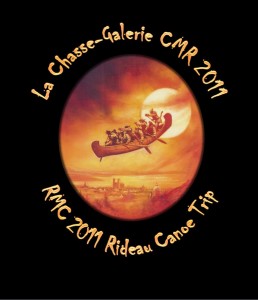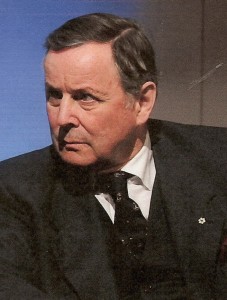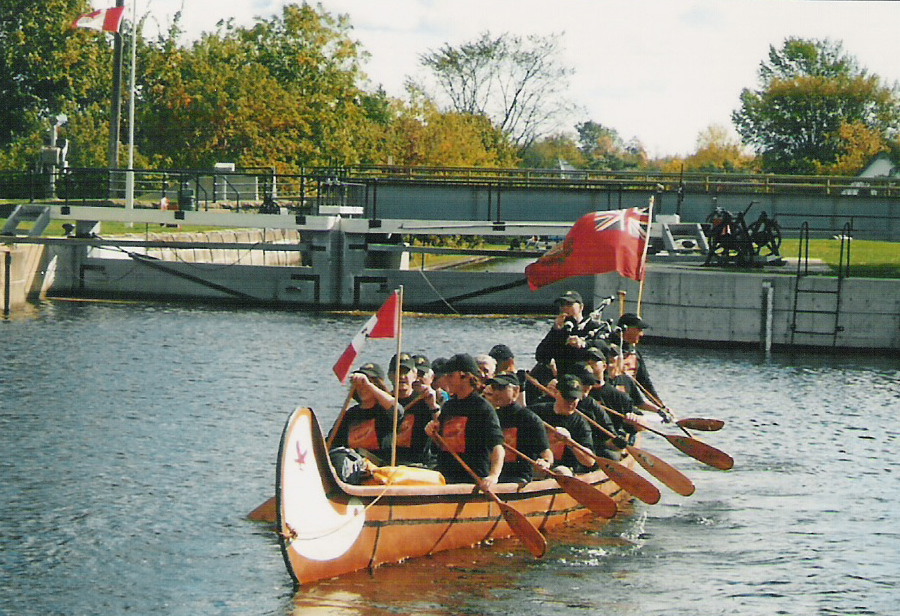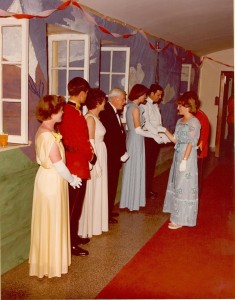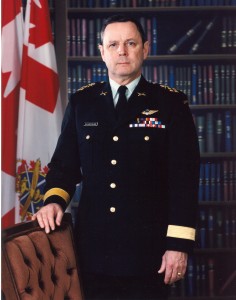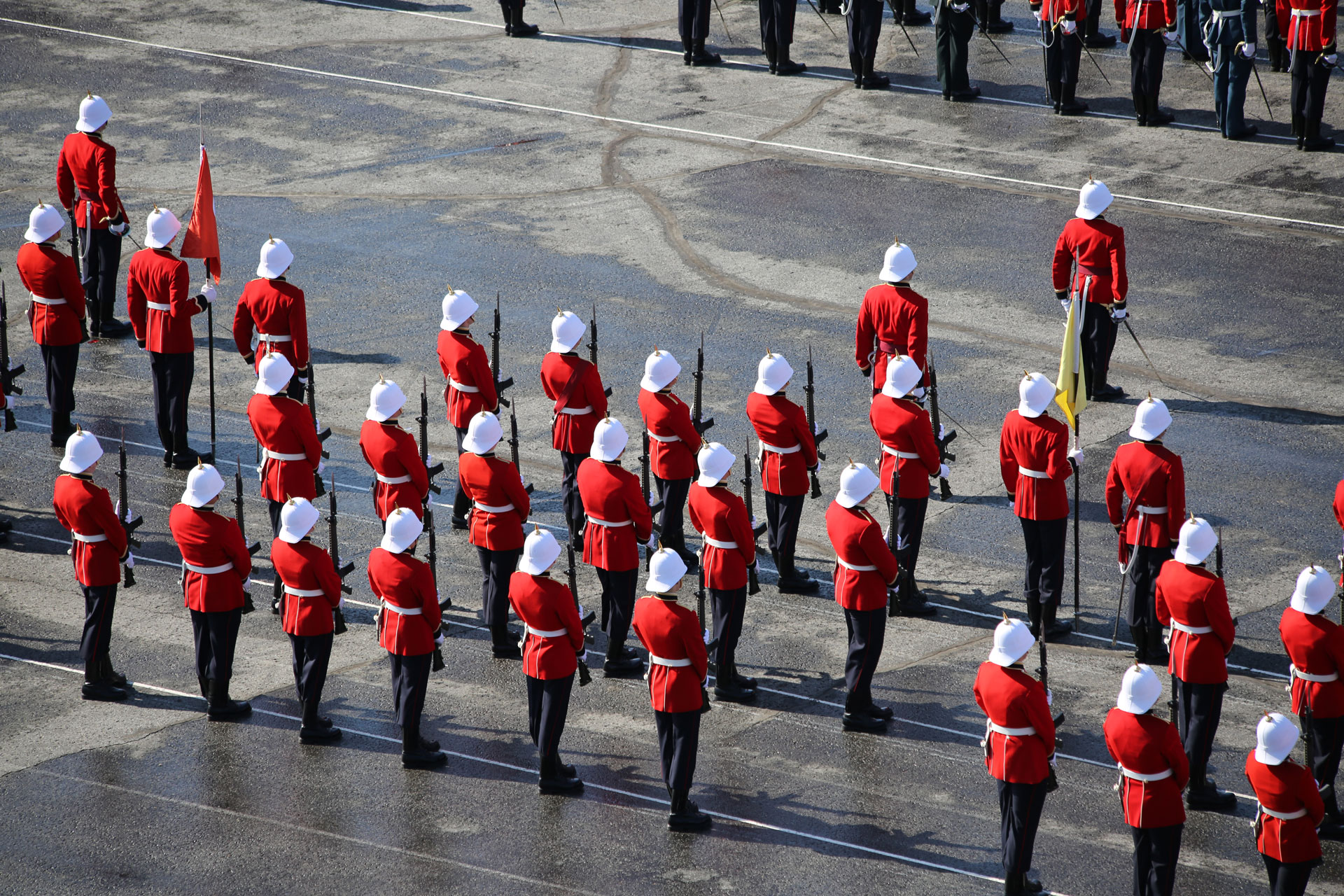
“Logo courtesy of Sleeman/Unibroue”
25881 OCdt III Anthony Matlock recently interviewed , 4860 General (ret’d) John de Chastelain one of fifteen Ex-Cadets who will raise money for the Danny McLeod Athletic Endowment Fund by paddling a voyageur canoe from Ottawa to Kingston this September, 2011. Readers can make a pledge or donation at www.rmcclubfoundation.ca.
This will be the second canoe trip along the Rideau for General (ret’d) John de Chastelain, and he is looking forward to some vigorous paddling and piping – “but not at the same time,” he quips.
His last Chasse-Galerie adventure was five years ago at the invitation of Geoff Bennett. The former Chief of Defense Staff (CDS) says he is “happy to continue to support it,” given that, “Danny MacLeod is an old friend – by length of acquaintance, not age – and a great soldier and leader who has done much for RMC’s physical fitness and athletics programs, and whose athletic endowment fund is a particularly worthwhile project.”
So who is the man with a paddle in one hand and pipes in the other?
In re-joining his Calgary-based family in 1955, following a final year of boarding school in Scotland, a young John de Chastelain attended the Mount Royal College to brush up on his sciences and join the militia as an infantry private. “I already had four years of army cadet training in Edinburgh and I’d learnt to play the pipes at age thirteen, so I was immediately enrolled and spent most of my time in the pipe band.”
At his father’s suggestion, he enrolled in the ROTP and entered RMC in 1956, opting to remain in the infantry as a cadet. Around this same time, Cold War tensions involved the Soviet invasion of Hungary and the Suez Crisis. “Lester Pearson suggested the formation of a United Nations Peacekeeping Force to go to Egypt under Canadian Command, which I thought was a good idea as we were about to start Christmas exams and I had the feeling I might fail math.”
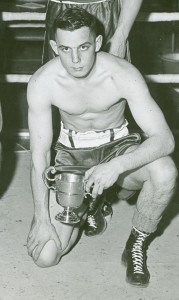
By 1960 the young infantry officer graduated with an Honours degree in History under 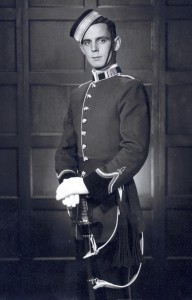
Fresh from RMC, de Chastelain requested the PPCLI “as it was a western regiment – my family was in Calgary – and the Second Battalion had the parachute role then, something I wanted to do.” He gained valuable experience with the first and second battalions as Brigade Major of the First Canadian Infantry Brigade Group, as well as gaining opportunities for operational deployments in Germany and Cyprus. “My first tour in Cyprus in early 1968 – as a company commander with 1 PPCLI – was relatively quiet. It followed massacres in two Turkish Cypriot villages the previous Fall, which prompted a near invasion of the Island by Turkey. When I returned to Cyprus in 1976 as Deputy Chief of Staff of the UN Force there, it was in the aftermath of the 1974 invasion by Turkey. The presence of some 15,000 Turkish troops in the northern part of the Island ensured there was little adventurism on the part of those who still supported union with Greece.”
In 1976, then Colonel de Chastelain took command of CFB Montreal to oversee the deployment of 17,000 troops in that city during the Olympic Games. This was a major security challenge, given threats at the time and following the massacre of Israeli athletes during the previous games in Munich.
As a brigadier-general, the 39-year-old de Chastelain returned to RMC as the commandant. “I was surprised both by how much had changed and by how much was still the same. I considered myself young enough to scrimmage with the rugby team, to test-run annually the recruit obstacle race with the Fourth Year, and to take part in the Wing Harriers and other cadet athletic events.” Changes at the time included the acceptance of female cadets into the College, “and one of my last roles was assisting in the selection of the first thirty-two.”
“When I returned to Ottawa in 1986 as a Lieutenant-General, I was to remain there for the rest of my service career. In retrospect, while I always preferred to be in the field (who doesn’t?), it would probably have been better if I’d had a staff job at NDHQ at the Major, Lieutenant-Colonel or Colonel level.”
Promoted to General and appointed CDS in 1989, his first priority was to visit all of the Canadian bases, stations and deployed forces. He achieved most of this within one year. His main focus operationally “was with the events at OKA, the First Gulf War, the outbreak of civil war in the former Yugoslavia and our major involvement there, a large increase in peacekeeping activity, and the deployment of a task force to Somalia.”
The part of the top job he “least enjoyed” was “managing the demand for huge reductions in defence spending as the country looked for a ‘peace dividend’ following the Cold War’s end.” He recalls, “that situation necessitated tough decisions on base closures, reductions in personnel, the removal of formations and units from the Order of Battle, and the withdrawal of our stationed forces in Europe.”
In 1993 the General transferred to the reserves and, upon request from Prime Minister Mulroney, took up the position of Ambassador to the United States. “The emphasis that year was on getting the North American Free Trade Agreement (NAFTA) approved, which meant I spent a lot of time on Capitol Hill talking to Senators and Congressmen to sell the agreement.”
After a year as Ambassador, he was asked to return to the Regular Forces and serve a second term as CDS. “I originally rejected Prime Minister Chretien’s request that I return as CDS. I pointed out that there were Generals and Admirals who were ready and able to take over the post, and that my return might seem to indicate an unwarranted lack of confidence in their ability. I finally agreed on the basis that I just finish the remaining two years of the outgoing CDS’ tour, and not stay for a full three-year term.”
Since his military retirement in 1995, the RMC Club Vice-Patron has been heavily involved with the Northern Ireland Peace Process. “I had three roles in Northern Ireland. The first was as one of a three-member team conducting a two-month examination of the issue of decommissioning paramilitary arms in preparation for the upcoming peace talks. The second was as one of three independent chairmen whose responsibility was to chair those parts of the peace talks which led to the Belfast Good Friday Agreement of 1998. The third role was as Chairmen of the Independent International Commission on Decommissioning – tasked with carrying out the decommissioning of arms belonging to both republican and loyalist paramilitary groups.” This final role began in September 1997 and finished at the end of March of this year.
Although his involvement in Ireland has come to an end, the two-time CDS has remained busy. He is now serving on the Boards of The Forum of Federations and The United Nations Association in Canada. He is also a senior advisor on the University of Windsor’s Jerusalem Old City Initiative and serves as a Director of the Corps of Commissionaires. Closer to home, “I do some pro bono lecturing, and I carpenter, paint in oils, fish, tie flies, spend too much time on the internet and otherwise attempt to follow the dictum that old soldiers never die, they only fade away, although I’m not planning on fading any time soon.”
According to the retired General, who has been practicing his bagpipes in preparation for the September excursion on the Rideau, “the aspect I look forward to most is when 8926 Ray Hook says ‘splice the mainbrace.’” And in turning 75 this month, de Chastelain adds about his piping, “If I run out of puff during the trip, my fellow paddlers will surely notice, but they might not mind.”
Our aim at e-Veritas is to conduct one-on-one interviews with all 15 participants (in no particular order).We have two left.


